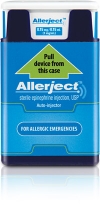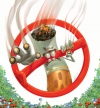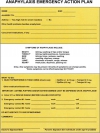 Together We Grow Learning & Childcare Centre recognizes that breast feeding is a normal way to feed a child and that breastmilk is optimal for a child’s growth and development.
Together We Grow Learning & Childcare Centre recognizes that breast feeding is a normal way to feed a child and that breastmilk is optimal for a child’s growth and development.
We will support women as they continue to breast feed and provide expressed milk for their child while on our facility.
We store and provide breastmilk according to York Region Community and Health Services’ guidelines. These guidelines are outlined in York Region’s A Public Health Guide for Childcare Providers Breast milk in Child care settings.
Each child care staff member will:
- Review the York Region Community and Health Services Departments handouts
- Breastmilk in Child Care Settings
- Storing Expressed breast milk
- Ensure that this policy has been reviewed annually, or as needed
- Encourage parents to only bring the amount of milk needed for each day; the daycare facility will not store milk in the fridge overnight.
- Perform a Double–Check Process every time a child is fed breastmilk. This will involve two staff members checking that the correct breast milk is fed to the correct child. Both the parent’s and child’s name will be confirmed with each staff member. The two staff members must sign the Breastmilk Administration Form.
- Clean hands before and after handling breastmilk, wear gloves if there is a risk of getting milk on the hands. If breastmilk comes into contact with open skin, mouth or eyes, follow the procedures for handling blood and bodily fluids such as stool, urine or vomit
- Understand the procedure if a child consumes breastmilk not intended for him/her. Both the parent of the child who consumed the breastmilk in error and the mother whose breastmilk was fed in error should be notified immediately and instructed to contact their physician.
- Attend training and information sessions as needed.
Supportive Breastfeeding Practices
Our facility will provide a respectful environment for breastfeeding families and staff. We will:
- Support women to breastfeed exclusively for the first six months and to continue breastfeeding for two years and beyond.
- Provide a comfortable space for women to breastfeed anywhere and anytime. The Ontario Human Rights Commission clearly indicates that all women have the right to breastfeed in any public space and that they cannot be asked to cover – up or move to a more private location.
- Provide a secure and designated space in the refrigerator for breastmilk.
- Educate staff and families about the importance of breastfeeding and provide referrals for further supports as needed.
- Staff will be educated about proper storage and handling of breastmilk.
- Staff will ensure proper hand hygiene at all times.
Definitions
Milk Check-In
- Staff ensures the container is properly labelled and stored according to the “Use of Human Milk Policy and “Storing expressed Breast Milk” factsheet
- Staff ensures the identification at the top of the “Human Milk Administration” form is completed.
- The number of containers/ bottles of milk are recorded; each container/ bottle is labelled.
- One staff signature and parent signature is required.
Milk Use
- Staff checks the name on the label of milk with another staff member, ensures correct milk is given to the correct child.
- Two staff signatures required.(FOR EACH USE OF MILK)
- De-canted milk (milk dispensed in smaller containers at time of use) is to be returned to the fridge as soon as possible.
- Staff discards any milk not finished by the child. (If child consistently does not finish the milk provided, please records the amounts wasted and notify the parent.
Milk Pick-Up
- Staff checks the names on the label and containers/bottles are released to parent, ensuring any unused milk is given to the correct parent.
- The number of containers/bottles of milk being returned is recorded
- One staff signature and one parent signature is required.
Breast Milk Administration Form – Sample
Date: April 3, 2014
Daily record for: Child’s name
Parent printed name and signature: Parents name and signature.
Number of containers checked-in: # of containers/ bottles
Milk Check-In
Time Staff
Signature Parent
Signature # of containers/bottles
Milk Use
Time Staff Signature #1 Staff Signature #2
Milk Pick-Up
Time Staff
Signature Parent
Signature # of containers/bottles
Labelling
The label on the storage container should carry the following information:
- Parent name
- Parent signature
- Child’s name
- Date milk checked-in
Storing Expressed Breast Milk
 Types of Storage containers/ bottles
Types of Storage containers/ bottles
- Glass or non bisphenol A(BPA) containing hard plastic containers with a tight lid
If you are unsure whether your plastic bottles or containers contain BPA, please contact the manufacturer
- BPA-free breast milk freezer bags
If you use bottle liner bags, use two bags and double bag as the plastic is thin
How to clean the storage container:
- Wash the containers/ bottles in hot soapy water and rinse well with hot water
- Let the containers/ bottles air dry
If breast milk freezer bags are being used, they are sterilized and ready to use. They are for one time use only and cannot be re-used.
When storing breast milk:
- Write the date and time expressed on the container
- Store breast milk in small portions (2-4oz) to prevent wasting excess milk
- Cool freshly expressed milk in the fridge before adding it to already cooled or frozen milk
- If combining breast milk for storage, add a smaller amount of cooled milk to frozen milk
- Leave space at the top of the container when freezing as milk will expand
Using stored breast milk
- Use the oldest breast milk first
- If your baby is only getting expressed breast milk and not breastfeeding, give fresh breast milk as much as possible rather than stored breast milk.
Thawing breast milk
Options to thaw:
- Leave container/bottle in the refrigerator for 4 hours
- Hold container under cool running water then warm water to finish thawing
- Do not thaw at room temperature
Options to warm:
- Warm breast milk by placing container in a bowl of very warm water
- Do not heat on the stove or in microwave as this may create hot spots or damage the nutrients in the milk
Before using
- Swirl container/bottle to re-mix the fat into the breast milk
- Test the temperature before using it. It should feel slightly warm but not hot
- Use warmed breast milk within 1 hour and throw out any left over
- Thawed breast milk may taste or smell different than fresh, but it is still good.
Safe handling, storage and administration of breast milk are important in order to minimize the risk of contamination and infection to children and staff. As beast milk is a body fluid, child care staff should:
- Store human milk according to York Region Community and Health Services Storing expressed breast milk
- Ensure bottles and containers are labelled (date, name of infant/child and name of mother)
- Double check the name on the breast milk bottle with another colleague to ensure the correct child is receiving the correct human milk. Staff member should document this double check process.
- Clean hands before and after handling breast milk
- Wear gloves when handling and feeding breast milk if there is a risk of getting milk on the hands. This is especially true for cleaning up spills.
If a child consumes human milk that is not intended for him/her, we will contact a health–care provider immediately.



